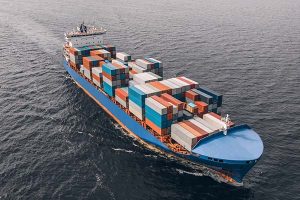Certinia Tips and Tricks: Combining Purchase Orders with Shipping Container Tracking

Most operational supply chain challenges fall into a few distinct categories that, when tackled in a systematic way, are easy to resolve. For example, purchase orders and shipping container tracking. When it comes to managing purchase orders, most warehouse teams still use spreadsheets, phone calls, and email to track down basic information; like which truck or container the order is in, and the estimated arrival date.
However, when using Certinia, custom methodologies can be developed so that warehouse teams can avoid manual purchase orders and tracking processes.
Automation and management of purchase orders combined with shipping container tracking in the same system give organizations:
- Better visibility to avoid delays, disruptions, and discrepancies.
- The ability to easily track multiple purchase order lines under centralized container record tracking, and update those lines with any delivery changes.
- A user-friendly interface to control product shipments from purchase to receipt.
- More complete data to generate reports for container delivery planning and inventory management.
- Multiple purchase order tracking once the container has arrived in the warehouse.
Tips to Get Started
The first step involves building a procurement system in your Certinia ERP, which will need set up to appropriately create and maintain purchase orders.
- You will then need to create a custom container object and include the necessary fields to track container information.
- Next, add or link multiple purchase order lines from the purchase orders to the container; this indicates all the items on the purchase order lines which will be delivered via that particular container to the warehouse.
- Once the container is physically received at its final destination, the status of the container record can be updated, and the linked purchase order lines item inventory can be received in the system appropriately.
Container Configuration
For a solution to work properly, it needs to be configured in the right way.
- Custom container objects should include the container header information, custom interface links, views of the purchase order lines associated with that container, and custom triggers to ensure container info is up to date.
- Container header information should include the container’s unique number, shipment ID, size, date shipped, and ETA of its arrival date.
- You can also include vehicle information, destination location, and the fulfillment date.
- The framework will be required so that users can easily access information in Salesforce; the UI should include a button for users to link the correct, unassigned open purchase order lines to the container header.
- The framework should also allow users to view linked purchase order line details like the purchase order number, line number, item, supplier ship date, supplier ETA date, quantity to be received, etc.
Results
This was one example of a solution that allows a user to combine and automate the purchase order process while tracking important container information in Certinia, to be displayed in Salesforce.
The end goal is to help coordinate and communicate with the carrier while keeping the receipt and inventory information together for warehouse management teams.
As well as the benefits listed in the first section of this blog, with this type of configuration, end-users will experience:
- Custom triggers on container objects making any necessary changes, like updating relevant purchase order lines to the appropriate arrival date.
- Container header fields tied to the associated purchase order lines automatically;
- When looking at a particular purchase order line that is already associated with a container, container information like its number, shipment ID, or other details included in the framework, is displayed.
- Once a container is physically received at its destination, its status can be updated, and the associated purchase order lines item inventory can be received in the system accordingly.
Looking for Salesforce or Certinia Support?
If your organization is looking for straightforward, hands-on assistance to optimize your Salesforce or Certinia solution—we’re here to help.
Search
Trending Topics
- E14: Our Point of View and Insights on AI – Java With Sugar Podcast
- E13: What Is Artificial Intelligence and Why Is It Beneficial for You? – Java With Sugar Podcast
- AI Ethics: What Is It and Why Does It Matter?
- 3 Tips to Improve Your Strategy and ROI When Selecting SaaS Solutions
- E12: Revenue-Focused Trends in Field Service – Java With Sugar Podcast
- E11: Synergize Field Service Management with Revenue Solutions – Java With Sugar Podcast
- E10: What Is Monetizing Field Service – Java With Sugar Podcast
- Mobile Field Service Solution Optimization: Healthy vs. Good Enough
- Salesforce Data Infrastructure: A Hyperforce Quick Guide
- A Quick Guide to AI, Generative AI, and Salesforce AI Cloud
